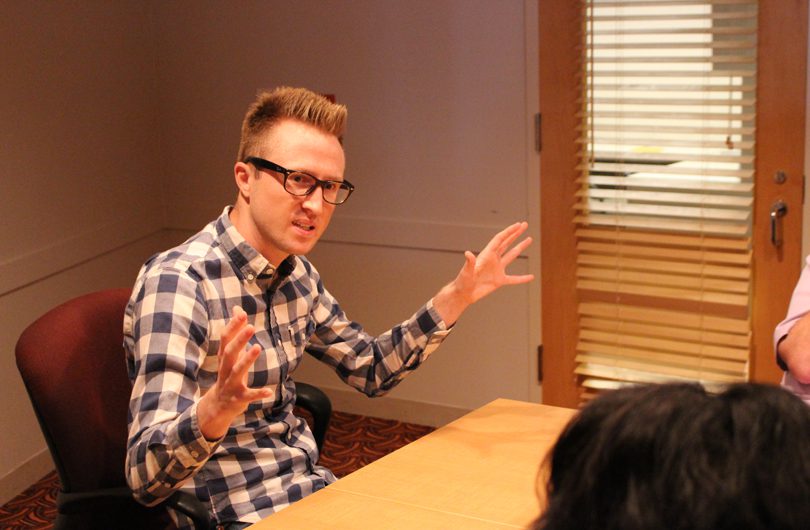Cody Estle
Director, By the Water
The storm, Hurricane Sandy – obviously that’s the bigger picture of By the Water. Sandy is the largest hurricane in the Atlantic ever. I think the thing that people don’t know is that of the five boroughs, Staten Island was wrecked the most. Also there were more deaths in Staten Island than any other borough, and they’re still recovering. In the New York Times just this week, there’s this article about how the L train line is going to be shut down for 18 months affecting about 225,000 riders each day, and it’s all because of Sandy, and hasn’t been fixed since Sandy – in 2012.
One of the things that Sharyn [Rothstein, the playwright] sent me is that often Staten Island is the forgotten borough. I was watching a video the other night of this woman, and she’s screaming at the top of her lungs “Help us! Help us!” because nobody would pay attention. In this play— obviously it’s about the storm, the storm is why all this is happening – but it’s also about the family in and of itself. There are secrets that come out, or things that have not been dealt with in this family, and those things are being brought out because of the storm.
One of the things I texted BJ [Jones, Artistic Director] last night as I was reading it is, dads are tough. My father son relationship is trying. It’s better now, now that I don’t live at home, but when Sal and Marty have it out at the end, I think it’s healthy in some ways, because it’s been brewing, and it needs to happen. In so many ways, I feel like that is going to happen for me some day, with my father and me.
The characters in the play are all very wounded from this experience. I can’t even imagine. When Mary and Marty walk in at the top and they talk about the smell—that’s another thing I’ve been watching in videos, when people are coming back to the houses that you see them basically go white, because the stench of it all is so present.
I think beyond family, what the play is even more about is community. These two families grew up side by side and know everything about each other, and share the whole idea of do we stay or do we go? Do we continue to rebuild our lives here even though this has happened before?
It’s interesting that they’ve lived in this area for 30-some years. This is another thing Sharyn was saying—it’s sort of the American Dream to live on Staten Island. You can live in New York City, you can be a teacher, or a fireman; Staten Island is mostly working class. You can have that life, and live on the water, in New York City. And I guess Staten Island (I’m hoping to go before our play opens), the beaches there are stunning. That’s not something you would necessarily think of with living in New York City, but it is sort of the American Dream, that you can live and work in New York and be able to live on the water.
But with that comes the whole, you know… it’s why [Governor] Cuomo proposed this whole buyout plan. In the neighborhood that this play is based on, there were 184 families living on the water, and after the buyout plan was proposed, all but 40 families took it. And the whole idea was to allow the area to go back to its natural habitat, letting it just be a beach. Inevitably, there’s going to be another hurricane. And the hope is that the next time, it won’t affect so many people. It’s something I didn’t know, the idea of returning the land to its natural habitat so this doesn’t happen again.
Another reason why I love this play is it’s a play about love: holding on to current relationships, and pulling and digging up relationships from the past. In many ways, for this particular family, the hurricane is healing them, by the end. One of the things I’ve been thinking about is I want audiences to laugh, because it’s funny, it’s very funny. And I want them to cry, because it’s also very moving. And I think those two elements together make a great kind of entertainment.

